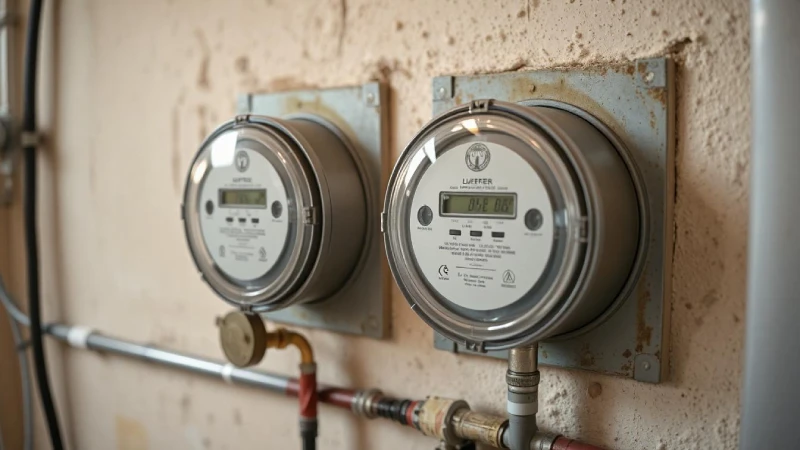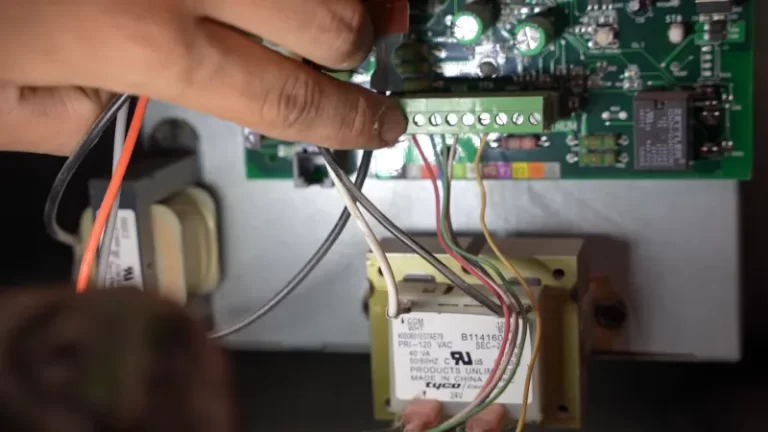The Cost to Combine Two Electric Meters: A Comprehensive Guide
Combining two electric meters into one can be a practical solution for homeowners looking to streamline their electricity usage, simplify billing, or potentially reduce overall costs. This process, while beneficial, involves several steps and considerations, including costs, permits, and potential changes to the electrical system.
This article explores the reasons for combining electric meters, the detailed steps involved, the costs, and the potential benefits and challenges. By understanding these factors, you can make an informed decision and ensure a smooth transition to a single electric meter setup.
You'll Learn About
Why Combine Two Electric Meters?

Simplifying Billing
One of the primary reasons for combining two electric meters is to simplify billing. Managing multiple bills can be cumbersome, and a single meter can streamline payments and reduce administrative hassle.
Reducing Costs
In some cases, combining meters can lead to cost savings. For example, certain utilities may charge lower rates for higher usage levels, and consolidating your meters might help you reach those thresholds.
Increasing Efficiency
A single meter system can make it easier to monitor and manage electricity usage, potentially leading to more efficient energy use and reduced overall consumption.
Property Management
For landlords or property managers, combining meters can simplify the management of multiple units, making it easier to handle utilities and maintenance.
What Are the 2 Types of Energy Meters?
Energy meters are devices used to measure electrical energy consumption. They track the amount of power used by homes and businesses. Two main types of energy meters are commonly used today.
Electromechanical Induction Meters
Electromechanical induction meters are traditional devices used for energy measurement. They have been in use for decades and are reliable. They feature a spinning disc mechanism that registers electrical usage.
Electromechanical meters are moderate in accuracy compared to electronic versions. They have higher power consumption, which can lead to inefficiencies. Despite being older, they are still widely used in residential areas.
These meters operate using electromagnetic induction to measure current and voltage. They measure energy consumption through physical movement of internal components. Maintenance may be required periodically to ensure accuracy and proper operation.
Electronic Meters
Electronic meters are modern devices with advanced digital technology built-in. They are highly accurate, offering better performance than traditional mechanical meters. Electronic meters are widely used due to their ease of use.
They consume less power, making them energy-efficient compared to other meters. These devices utilize electronic circuits to measure voltage and current. They are ideal for both residential and commercial energy monitoring needs.
Electronic meters are equipped with advanced features, such as data logging. They are durable, efficient, and have a longer lifespan than older models. They provide real-time monitoring and accurate results, ensuring efficient energy usage.
Smart Meters
Smart meters are an advanced version of electronic energy meters. They offer high accuracy and low power consumption when compared to others. They are equipped with communication capabilities for two-way communication.
Smart meters are capable of transmitting data remotely to utility companies. They allow utilities to monitor energy consumption without needing manual readings. They improve real-time energy tracking and help reduce power consumption rates.
Smart meters are efficient and can detect usage patterns effectively. They provide users with insight into their daily electricity consumption habits. Smart technology enhances both user experience and operational efficiency within homes and businesses.
Steps Involved in Combining Electric Meters
Assessing the Current Electrical System
- Professional Inspection: Hire a licensed electrician to inspect your current electrical setup. They will evaluate the existing meters, panels, and overall system to determine the feasibility of combining the meters.
- Load Calculation: The electrician will perform a load calculation to ensure that a single meter can handle the combined electrical load of the two systems. This step is crucial to avoid overloading the system and ensuring safety.
Planning and Design
- Electrical Plan: Develop a detailed electrical plan that outlines how the two systems will be integrated into one. This plan should include the layout of the new wiring, placement of the single meter, and any necessary upgrades to the electrical panel.
- Permits and Approvals: Obtain the necessary permits and approvals from local building and electrical authorities. This step is essential to ensure that the work complies with local codes and regulations.
Upgrading the Electrical Panel
- Panel Upgrade: Depending on the load calculation and the existing panel’s capacity, you may need to upgrade your electrical panel to handle the increased load. This might involve installing a larger panel with more circuit breakers.
- Rewiring: Rewiring may be necessary to connect the circuits from the second meter to the upgraded panel. This process ensures that all circuits are properly integrated and balanced.
Installing the New Meter
- Remove Old Meters: The electrician will remove the old meters and disconnect the circuits from the existing panels.
- Install Single Meter: A new single meter will be installed in place of the old meters. This meter will be connected to the upgraded electrical panel, ensuring that all circuits are routed through the new meter.
- Inspection and Testing: Once the installation is complete, the system will be inspected and tested to ensure it operates correctly and safely. The electrician will verify that the meter is accurately measuring usage and that all circuits are functioning properly.
Final Inspection and Approval
- Local Authority Inspection: A final inspection by the local building or electrical authority will ensure that the work meets all safety and code requirements. This inspection is necessary for the official approval of the new setup.
- Utility Company Notification: Inform the utility company about the changes. They will update their records and billing system to reflect the new single meter configuration.
Costs Involved in Combining Electric Meters
Breakdown of Costs
- Professional Inspection and Consultation: $100 – $300
- Permits and Fees: $50 – $200
- Electrical Panel Upgrade: $500 – $2,500 (depending on the panel size and complexity)
- Rewiring and Labor: $1,000 – $3,000 (depending on the extent of rewiring required)
- New Meter Installation: $200 – $500
- Final Inspection and Approval: $50 – $200
- Contingency Fund: $200 – $500 (for unexpected expenses)
Total Estimated Cost
The total cost to combine two electric meters typically ranges from $2,100 to $7,200. This estimate can vary based on factors such as the complexity of the electrical system, the need for panel upgrades, and regional differences in labor and permit costs.
Potential Benefits and Challenges
Benefits
- Simplified Billing: One of the most significant advantages is the streamlined billing process, reducing the hassle of managing multiple bills.
- Cost Savings: Potential for lower electricity rates and reduced overall costs.
- Increased Efficiency: Easier to monitor and manage electricity usage, potentially leading to more efficient energy use.
- Property Management: Simplifies utility management for landlords or property managers.
Challenges
- Upfront Costs: The initial cost of combining meters can be significant, especially if substantial upgrades to the electrical system are required.
- Disruption: The process involves significant work on the electrical system, which can be disruptive to the household.
- Regulatory Compliance: Ensuring compliance with local building codes and regulations can be complex and time-consuming.
- Load Management: Ensuring that the combined load does not exceed the capacity of the single meter and panel requires careful planning and calculation.
Key Steps and Estimated Costs for Combining Electric Meters
| Step | Description | Estimated Cost |
|---|---|---|
| Professional Inspection | Hire a licensed electrician to assess the current setup | $100 – $300 |
| Permits and Fees | Obtain necessary permits and approvals | $50 – $200 |
| Electrical Panel Upgrade | Upgrade panel to handle increased load | $500 – $2,500 |
| Rewiring and Labor | Rewire circuits to integrate systems | $1,000 – $3,000 |
| New Meter Installation | Install new single meter | $200 – $500 |
| Final Inspection and Approval | Final inspection by local authority | $50 – $200 |
| Contingency Fund | For unexpected expenses | $200 – $500 |
| Total Estimated Cost | Sum of all estimated costs | $2,100 – $7,200 |
By carefully considering these factors and working with a licensed electrician, you can ensure a successful transition to a single electric meter setup, enhancing the efficiency and manageability of your home’s electrical system.
What Is a Multi-Rate Electric Meter?
A multi-rate electric meter is a type of energy meter. It allows electricity providers to charge varying rates at different times. These meters offer flexibility for consumers with varying electricity consumption patterns.
How Multi-Rate Meters Work
Multi-rate meters track electricity usage during peak and off-peak times. Consumers pay a higher rate during peak usage hours. During off-peak periods, electricity rates are significantly lower.
The system divides the day into different rate periods for pricing. These periods vary depending on time slots set by the utility. The idea is to encourage consumers to shift usage patterns to save.
Multi-rate meters are ideal for managing electricity costs effectively. They provide users with opportunities to save money by adjusting habits. Shifting energy-intensive tasks to off-peak hours can result in savings.
Types of Multi-Rate Meters
The most common type of multi-rate meter is an economy 7 meter. This meter charges one rate during peak hours and a lower rate during off-peak hours. Economy 7 meters are widely used in homes with electric heating systems.
Another type of multi-rate meter operates on two-rate pricing systems. This allows consumers to take advantage of savings during specific hours. Multi-rate meters can vary depending on location, utility company, and energy needs.
They are ideal for industries and households with flexible energy patterns. Multi-rate options reduce costs by spreading consumption to off-peak periods. These meters offer transparency for budgeting and long-term energy savings.
Advantages of Using Multi-Rate Meters
Multi-rate meters allow consumers to reduce their electricity bills. They make it easier to shift energy-intensive tasks to off-peak periods. This simple change can lead to significant long-term savings for users.
Another key benefit is flexibility in how electricity is consumed. Businesses and homeowners can plan their usage patterns according to pricing. This strategy reduces strain on the power grid during peak times.
Multi-rate meters also support environmental goals by reducing peak demand. They allow utilities to balance electricity demand efficiently throughout the day. Multi-rate technology improves grid reliability and promotes energy conservation.
Conclusion
Combining two electric meters into one can offer numerous benefits, including simplified billing, potential cost savings, and increased efficiency. However, it is a complex process that involves careful planning, professional inspection, and potential upgrades to the electrical system.
By understanding the steps involved, the costs, and the potential benefits and challenges, you can make an informed decision about whether this solution is right for your home.
Combining two electric meters can save on utility costs but requires professional installation. For more electrical tips, check out our guides on connecting 10-3 to 10-2 wire and pigtail vs daisy chain outlets. If you’re tackling other home improvements, like running wire through a top plate, proper planning ensures safety.


![Taco Zvc404 C Wire [Locating, Connecting, Troubleshooting]](https://fixitinthehome.com/wp-content/uploads/2023/02/Taco-Zvc404-C-Wire-768x432.webp)